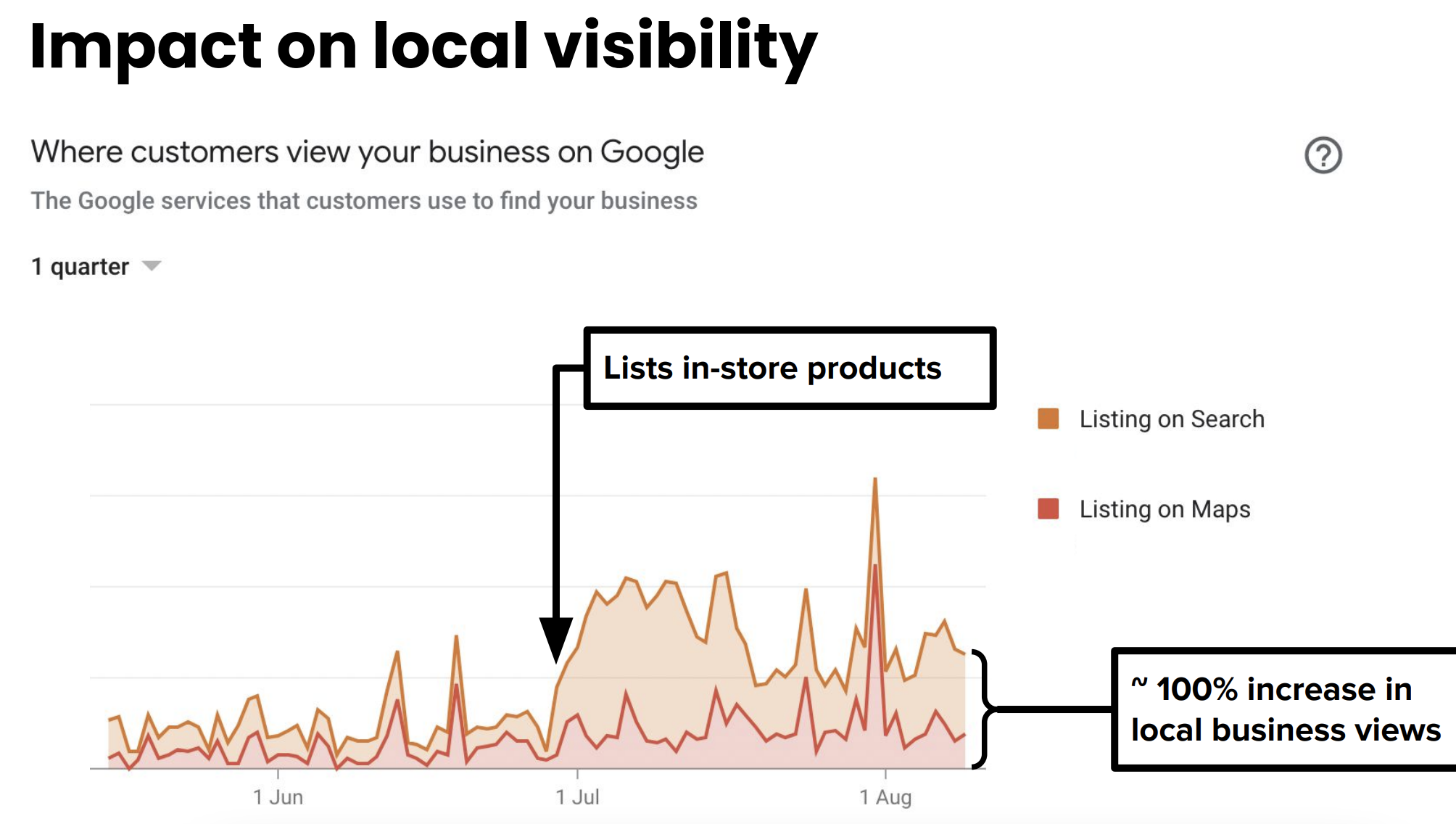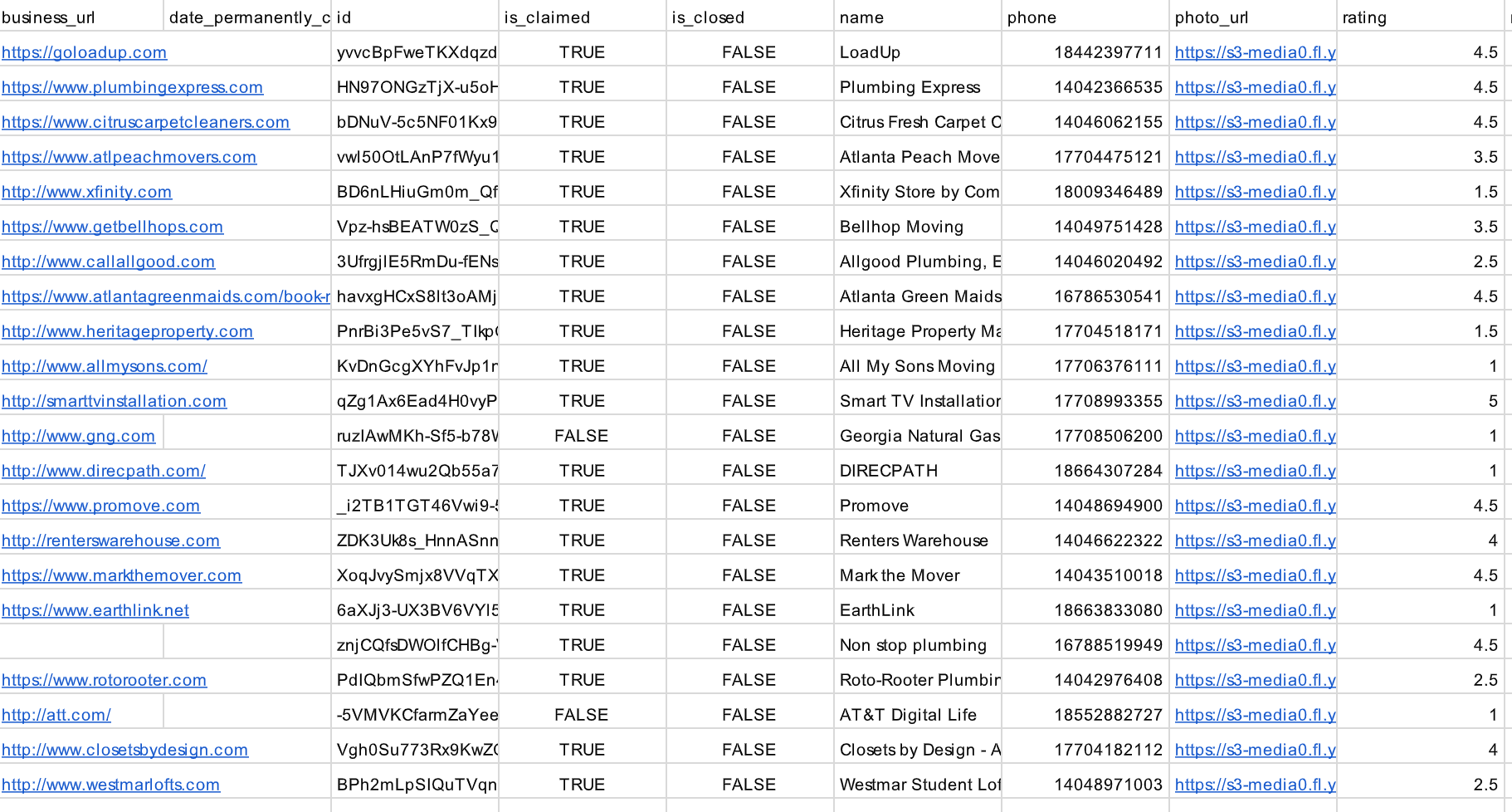Inventory = Local Visibility, Yelp Selling Data, 74% of Shoes Sold Online

Product Inventory = Local Visibility
At one time, there were multiple startups chasing real-time product inventory. The methodologies were varied but almost all of them are now gone, just as Google is emphasizing local product inventory as part of its strategy to compete with Amazon. In 2020, Google acquired SMB-facing startup Pointy. (It's not clear how much additional adoption has come since then.) Lastmile Retail is still going and so is Near St., a UK startup that seeks to integrate with POS databases and then syndicate local inventory to Google and other digital platforms, which will increase. Nick Brackenbury, co-founder and CEO of Near St. told me that by adding local inventory to Google, some customers were seeing significant additional exposure on SERPs, up to 100% more local impressions in the example below.

Our take:
- Google is increasingly showing product images and in-stock/in-store availability in the Local Pack
- Google says local inventory will make the business more relevant to more search queries, which makes sense. Google implies it's a ranking factor.
- We may start to see local inventory data become a value-added component of listings management. It's still a hard, unsolved problem.
Yelp Selling Its SMB Data
There are ~30 million small businesses in the US according to the US SBA. The vast majority are very small. During and since the height of the pandemic new business formation has outpaced pre-pandemic levels. Facebook is making it easier to target SMBs with new B2B marketing options. Yelp is offering marketers and SaaS companies access to its database of 10 million listings (mostly SMBs). The company has productized and is now selling that data. The fields include name, address, phone, URL, category, ratings and reviews, attributes and engagement metrics. Yelp offers a range of marketing/sales use cases: customer/CRM data enhancement and validation, prospecting, competitive intelligence and others. There are a variety of case studies presented as well. There's also an API. (This may not be entirely new but seeing a new push.)

Our take:
- This is another non-advertising revenue product for Yelp. There's no pricing online. Email contact data appears not to be present.
- While Yelp's review growth has slowed over time, presumably this data is accurate and up-to-date. It can be segmented in multiple ways.
- Is this a smart way to package and productize already public information or is it a reflection of increasing pressure on Yelp – or both?
Majority of Apparel, Footwear Sales Online
According to a new survey of nearly 12,000 US consumers in June, the majority of clothes (67%) and footwear (74%) retail spending is now happening online. Given the general slowdown in e-commerce, we're somewhat skeptical of these numbers (though the sample was very large). According to the survey, consumers start their purchase process online at 1) retailer websites, 2) brand websites, 3) Amazon, 4) social media. The online transaction happens in those places, in the same order (graphic below). The survey also finds that consumers rely heavily on reviews as part of the purchase process. As a purchase driver, reviews are second only to price. A related finding is that consumers want to see a large volume of reviews (including images) but actually don't read a huge number. The report goes on to discuss a number of best practices for online apparel and footwear sellers to improve conversions and reduce returns.

Our take:
- One strange and missing element here is the total absence of any discussion of Google or search engines. It's a glaring omission.
- While fashion is one of the leading online shopping categories, I remain skeptical the percentages (in the US) are as high as reported.
- Not discussed: what % of the retailer websites where people buy are associated with traditional stores. It must be a significant figure.
Recent Analysis
- Near Memo episode 77: Google whines about Apple's iMessage, Axios acquired by Cox, Facebook's newish B2B segments.
- ICYMI: Adding In-store Products Can Improve Local Rankings, by Mike Blumenthal.
Short Takes
- Google tests image-rich travel overlay and expandable Maps in SERP.
- YMYL content should align with expert consensus if you want to rank.
- Google Discover feed: Author name being shown rather than site.
- Google is using NLU/language models to improve robots.
- Google running print campaign touting support for news publishers.
- Digital retail media ad spending to reach $61B by 2024.
- Positive Q2 results from Walmart, HomeDepot boost market.
- Downtown recovery rankings: Portland, Cleveland, SF at bottom.
- Mixed economic signals stymie SMB decision-making (WaPo).
- GoDaddy's new long-form video focused on local SMB stories.
- Snap has more than 1M subscribers for its paid Snapchat+ product.
- Amazon is hiking seller fees for the holidays.
- Customer surveys make comeback as cookie substitute for some.
- First party data + modeling: Google's update on post-cookie approach.
- TikTok's advice for brands wanting to get in on the action – on YouTube.
Listen to our latest podcast.

How can we make this better? Email us with suggestions and recommendations.

